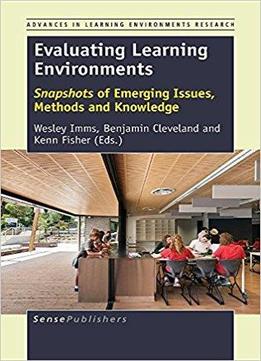
Evaluating Learning Environments
by Wesley Imms /
2016 / English / PDF
33.6 MB Download
The recent trend in innovative school design has provided exciting places to both learn and teach. New generation learning environments have encouraged educators to unleash responsive pedagogies previously hindered by traditional classrooms, and has allowed students to engage in a variety of learning experiences well beyond the traditional ‘chalk and talk’ common in many schools. These spaces have made cross-disciplinary instruction, collaborative learning, individualised curriculum, ubiquitous technologies, and specialised equipment more accessible than ever before. The quality of occupation of such spaces has also been encouraging. Many learning spaces now resemble places of collegiality, intellectual intrigue and comfort, as opposed to the restrictive and monotonous classrooms many of us experienced in years past.
These successes, however, have generated a very real problem. Do these new generation learning environments actually work – and if so, in what ways? Are they leading to the sorts of improved experiences and learning outcomes for students they promise? This book describes strategies for assessing what is actually working. Drawing on the best thinking from our best minds – doctoral students tackling the challenge of isolating space as a variable within the phenomenon of contemporary schooling – Evaluating Learning Environments draws together thirteen approaches to learning environment evaluation that capture the latest thinking in terms of emerging issues, methods and knowledge.











